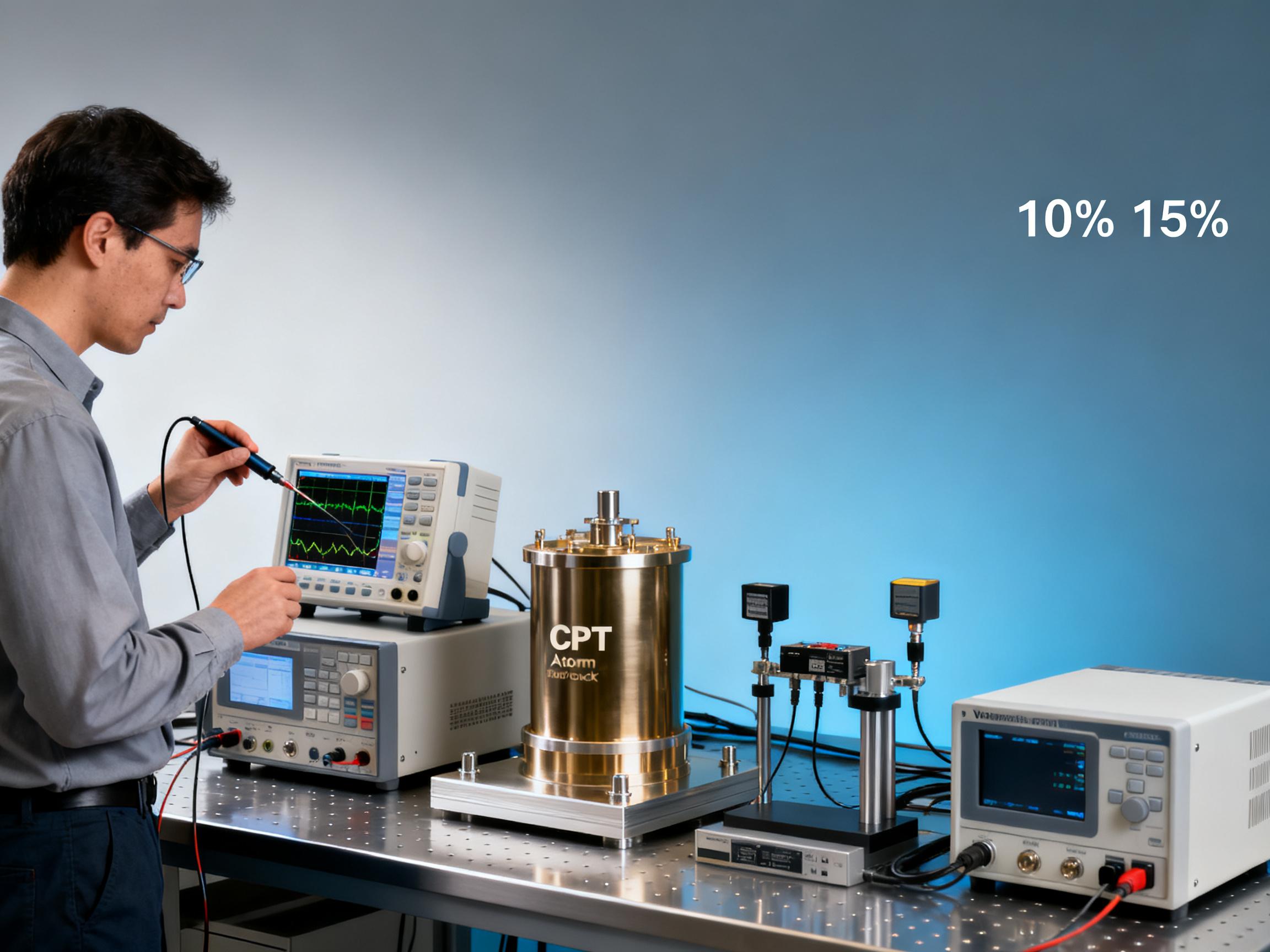RELATED
![How CPT Atomic Clocks Reduce OPEX in 5G Base Stations [Real Data] How CPT Atomic Clocks Reduce OPEX in 5G Base Stations [Real Data]](https://usimg.bjyyb.net/grey.png?x-oss-process=image/resize,m_fixed,w_800,h_600,limit_0) How CPT Atomic Clocks Reduce OPEX in 5G Base Stations [Real Data]2025-12-11
How CPT Atomic Clocks Reduce OPEX in 5G Base Stations [Real Data]2025-12-11 2024 CPT Atomic Clock vs Rubidium: Which Offers Better Stability for Telecom Networks?2025-12-08
2024 CPT Atomic Clock vs Rubidium: Which Offers Better Stability for Telecom Networks?2025-12-08 Live Demo Results: CPT Atomic Clock Performance Under Harsh Environmental Tests (Data Inside)2025-12-05
Live Demo Results: CPT Atomic Clock Performance Under Harsh Environmental Tests (Data Inside)2025-12-05 Budgeting for Precision: Total Cost of Ownership for a Rubidium Atomic Clock Over 5 Years2025-12-03
Budgeting for Precision: Total Cost of Ownership for a Rubidium Atomic Clock Over 5 Years2025-12-03
MESSAGE
1. Determine According To The Signal Frequency Characteristics:
Analyze The Signal Spectrum:
Perform spectrum analysis on the input signal to understand the distribution of each frequency component in the signal. For example, in audio signal processing, the main frequency component of the voice signal is usually between a few hundred Hz and a few thousand Hz. If the purpose is to remove high-frequency noise interference, the cutoff frequency of the low-pass filter can be set near the upper limit of the main frequency component of the voice signal, such as around 3kHz to 5kHz, so that the main component of the voice signal can be retained and the high-frequency noise can be effectively filtered out.
Determine The Signal Bandwidth:
For signals with a specific bandwidth, such as modulated signals in communication systems, the cutoff frequency is determined according to the bandwidth of the signal. If it is a bandpass filter, the cutoff frequency should be set to a range that can just pass the signal bandwidth. For example, if the bandwidth of a communication signal is 100kHz to 200kHz, the lower limit cutoff frequency of the bandpass filter can be set to slightly below 100kHz, and the upper limit cutoff frequency can be set to slightly above 200kHz to ensure that the signal can pass completely and effectively suppress interference from other frequency bands.
2. Determine based on application scenarios and requirements:
Anti-Interference Requirements:
If the main function of the filter is anti-interference, it is necessary to analyze the frequency range of the interference signal. For example, in the power system, the common harmonic interference frequencies in the power grid have a specific distribution, such as the 5th harmonic (250Hz, the power frequency of my country's power grid is 50Hz), the 7th harmonic (350Hz), etc. In order to suppress these harmonic interferences, the cutoff frequency of the band-stop filter should be set near the corresponding harmonic frequency, and the bandwidth should be determined according to the harmonic frequency range that needs to be suppressed to effectively attenuate these interference signals.
System Performance Requirements:
In some applications that require system response speed, the choice of cutoff frequency will affect the dynamic performance of the system. For example, in the control system, when the low-pass filter is used to filter the sensor signal, if the cutoff frequency is set too low, the signal response will be slowed down, affecting the real-time performance of the system; if it is set too high, the noise may not be effectively filtered out. At this time, it is necessary to adjust the cutoff frequency according to the system's comprehensive requirements for response speed and noise suppression, and find a suitable value through experiments or simulations.
3. Determine Using Filter Design Formulas And Charts:
Theoretical Calculation:
For some common types of filters, such as Butterworth filters and Chebyshev filters, there are corresponding design formulas that can calculate the cutoff frequency based on the filter order, type (low-pass, high-pass, band-pass, band-stop) and desired frequency characteristics. For example, for a Butterworth low-pass filter, the actual cutoff frequency can be calculated based on its normalized design formula, combined with the required filter order and 3dB cutoff frequency (usually defined as the frequency when the filter gain drops to 0.707 times).
Reference Design Charts:
Many filter design manuals and materials provide various filter design charts, such as frequency response curves, attenuation characteristic curves, etc. By consulting these charts, the appropriate cutoff frequency can be determined based on application requirements (such as required passband gain, stopband attenuation, etc.). For example, when designing a bandpass filter, by looking at the frequency response chart of the bandpass filter, find the cutoff frequency range that meets the requirements of gain flatness in the passband and stopband attenuation.
4. Determine Through Experiments And Debugging:
Build A Test Circuit:
In actual applications, build a test circuit containing a filter, input the actual signal or the signal generated by the analog signal source, and observe its frequency characteristics by measuring the output signal of the filter. Use test equipment such as a spectrum analyzer to analyze the spectrum of the output signal and adjust the cutoff frequency according to the test results. For example, when debugging a low-pass filter for removing power supply noise, gradually change the cutoff frequency of the filter, observe the noise level of the power supply output signal, and find the cutoff frequency point with the best noise suppression effect.
Optimization And Adjustment:
During the test process, it may be necessary to adjust the cutoff frequency and other filter parameters (such as filter order, capacitance and inductance values, etc.) multiple times to achieve the best filtering effect. At the same time, considering the impact of component errors and environmental factors in the actual circuit on the performance of the filter, the appropriate cutoff frequency is finally determined through repeated experiments and optimization.
CONTACT US
Please use the form below to get in touch.
If you need a reply we will get in touch as soon as possible.

![How CPT Atomic Clocks Reduce OPEX in 5G Base Stations [Real Data] How CPT Atomic Clocks Reduce OPEX in 5G Base Stations [Real Data]](https://usimg.bjyyb.net/sites/91500/91958/1765179857856560163985903616.jpeg)



